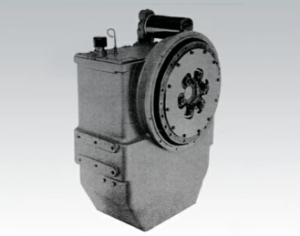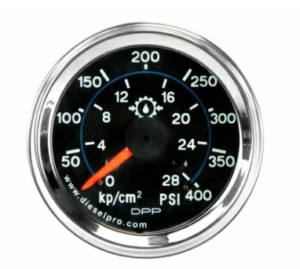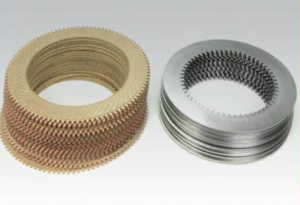
Introduction
The Twin Disc MG516 and MG5161 marine gears are built for long-term service under continuous load, harsh marine environments, and frequent directional changes. Despite their rugged design, mechanical systems eventually wear, oil systems degrade, and electronic controls fail. This guide is engineered for fleet operators, ship engineers, and marine mechanics needing a comprehensive troubleshooting checklist and root cause analysis strategy for diagnosing MG516 issues in the field.

Parts Catalog for Twin Disc MG516 Marine Transmissions
Rebuilt Twin Disc MG516 Marine Transmissions
Plate Kit For Twin Disc MG516 Marine Transmission
Gasket Kits For Twin Disc MG516 Marine Transmission
This guide includes:
- Common symptoms like no drive, slipping, or delayed engagement
- Step-by-step diagnostic tips with pressure readings and performance clues
- Guidance on when to call a professional technician or remanufacturer
Disclaimer: Always reference the official Twin Disc service manual for model-specific specs, tolerances, and repair procedures. This guide does not replace OEM procedures but enhances field-based diagnostics.
Common Symptoms and Causes
Let’s walk through the most reported issues with the Twin Disc MG516 and how to interpret their cause.
⚠️ 1. No Drive in Forward or Reverse
Symptom:
The transmission fails to move the vessel in either direction, despite engine RPM increasing normally.
Possible Causes:
| Cause | Details |
| Low or no oil pressure | Hydraulic clutches cannot engage |
| Shift valve malfunction | Spools stuck or not receiving signal |
| Electrical control failure | Solenoid not receiving or transmitting signal |
| Broken input shaft | No torque transmission from engine |
| Control lever misalignment | Mechanical or cable issue |
| Worn clutch discs | Excessive clearance, no torque transfer |
| Air in system | Causes pump cavitation or foam lock |
⚠️ 2. Slipping in Gear
Symptom:
Transmission engages, but RPM rises under load with no proportional movement.
Common Causes:
| Cause | Explanation |
| Burned clutch plates | Loss of friction from heat or age |
| Low oil pressure | Incomplete clutch engagement |
| Incorrect oil viscosity | Poor hydraulic pressure buildup |
| Improper clutch pack clearance | Excess space = slippage |
| Oil contaminated with water | Lowers clutch coefficient of friction |
| Solenoid underperforming | Partial shift engagement |
⚠️ 3. Delayed Engagement
Symptom:
Gear takes 2–5+ seconds to engage after shifting from neutral.
Root Causes:
| Cause | Impact |
| Valve body contamination | Slows hydraulic response |
| Varnish on spool valves | Causes stiction |
| Worn or collapsed clutch piston seals | Oil leaks past seals, delaying pressure build |
| Low idle RPM | Inadequate pump speed |
| Clogged filter | Restricts oil flow to clutch control |
⚠️ 4. Overheating Oil
Symptom:
Transmission oil temperature exceeds 200°F+ under normal load.
Possible Issues:
- Clogged heat exchanger
- Low oil level
- Failed cooler water pump
- Worn clutches = heat generation
- Oil breakdown = high friction
⚠️ 5. No Reverse or No Forward Only
Indicates:
- Single clutch pack failure
- One solenoid stuck or burnt out
- One valve spool stuck
- Improper shift signal from control head
Diagnostic Tips: Pressure Testing and Performance Indicators

Diagnosing marine transmission issues begins with pressure testing and visual inspection. The MG516 is a hydraulically actuated gearbox, so understanding pressure behavior is key.
Step 1: Check Oil Level and Condition
- Use dipstick with transmission fully warmed up
- Oil should be golden or amber (not black, milky, or foamy)
- Low oil = poor engagement
- Milky oil = water ingress
- Blackened oil = burned clutch packs
- Foam = air in pump or suction line
Step 2: Read Hydraulic Pressure
Use the test port located near the valve body or filter housing.
Tools:
- Hydraulic pressure gauge rated to 400–500 PSI
- Adapter for test port
- Infrared thermometer (optional)
- Logbook for idle and loaded readings
Pressure Specifications (Typical)
| Gear | PSI at Idle | PSI at Operating RPM |
| Neutral | 15–50 PSI | 20–70 PSI |
| Forward Engaged | 250–310 PSI | 280–350 PSI |
| Reverse Engaged | 250–310 PSI | 280–350 PSI |
If pressure is below 200 PSI under load, the clutch will likely not engage properly.
Step 3: Shift Function Test
- Warm engine to normal temp
- With neutral engaged, shift to forward
- Monitor engagement time (should be <2 seconds)
- Repeat with reverse
- Observe any delays, jerking, or surging
Step 4: Listen and Feel
- “Clunk” or “click” sound = clutch pack locking properly
- Long delay or no sound = clutch not engaging
- Surging = air in hydraulic circuit
- Vibration = misaligned shaft or worn damper plate
Step 5: Inspect Filters and Coolers
- Remove and inspect oil filter
- Look for metal flakes, burnt smell, or sludge
- Check cooler for blockage, especially with saltwater systems
- Use infrared gun to test oil temperature before and after cooler
Step 6: Check Electronic Inputs (if equipped)
- EC300 or similar controller:
- Power, ground, signal continuity
- Solenoid resistance (4–12 ohms typical)
- Check for blinking fault codes
- Override shift actuator if system allows
Step 7: Check Linkage (Manual Units)
- Ensure shift cable fully travels from N to F or R
- Lubricate and realign lever if binding
- Remove control cable and manually move valve by hand
Interpreting Pressure Behavior
Understanding pressure patterns can help you determine which component is faulty.
| Pressure Behavior | Likely Cause |
| Low in all gears | Oil pump failure or suction air leak |
| Normal in FWD, low in REV | Reverse clutch issue or solenoid failure |
| Pressure spikes and drops | Air in system or clogged filter |
| Zero pressure | Pump not primed or input shaft broken |
| Slow pressure rise | Worn seals or sticky valve spool |
When to Call a Specialist
Sometimes, even seasoned mechanics need to bring in a professional—especially when time is limited or the risk of improper reassembly is high.
Call a Twin Disc Specialist or Rebuilder If:
1. Clutch Packs Need Replacement

- Clutch pack clearances must be measured to within 0.001”–0.003”
- Stacking errors can cause catastrophic drag or slip
- Incorrect plate types or quantity can lock up the gear
2. Gear Teeth Show Wear or Pitting
- Requires magnification, backlash check, and pattern testing
- Gear misalignment or bearing wear can escalate rapidly
- Tooth replacement requires housing teardown
3. Bearings Need Replacement
- Requires press tools or oven methods
- Improper bearing preload can cause overheating
- If endplay is misadjusted, shaft wear or seal failure is imminent
4. Output Shaft Alignment Fails
- Misalignment > 0.004” leads to rapid wear
- Precision flange tools and shimming may be needed
- Prop shaft movement may need to be accounted for
5. You’re Unsure of Torque Specs
- Critical bolts (e.g., flange bolts, clutch carrier) need specific torque
- Over-torquing = cracked housings
- Under-torquing = catastrophic loosening under load
6. Housing Is Cracked or Scored
- Surface damage around bearing seats, threads, or oil galleries
- Should be inspected using borescope, dye-penetrant, or x-ray in some cases
- Welding or remachining castings is a specialist job
7. Transmission Has History of Overheating
- Requires oil flow diagnostics, clutch rebuild, and cooler replacement
- Varnish buildup in valve body may prevent full shift travel
- Debris from overheated clutches can destroy new bearings and seals if not flushed
Summary Diagnostic Flowchart
markdown
CopyEdit
Is there any movement in FWD or REV?
→ No → Check oil pressure and linkage → Check pump
↓
Yes, but delayed or slipping?
→ Check clutch pressure, oil condition, and solenoids
↓
Is pressure good but still slips?
→ Inspect clutch packs and piston seals
↓
Is temperature rising?
→ Inspect filter, oil level, cooler flow
↓
Still unresolved?
→ Disassemble valve body, replace filter, flush cooler
↓
Still unresolved?
→ Rebuild or replace transmission
Real-World Troubleshooting Examples
Case 1: Charter Boat With No Drive
Issue: No movement in forward or reverse. Engine RPM OK.
Diagnosis: 0 PSI pressure. Shaft rotating = input OK.
Fix: Found pump drive gear sheared off. Replaced gear and restored oil flow. Pressure restored to 280 PSI at idle. System operational.
Case 2: Workboat with Slipping Forward
Issue: Forward engaged but RPM surged under load.
Diagnosis: Pressure held at 270 PSI. Oil black and burnt.
Fix: Clutch pack destroyed. Replaced friction and steel plates. Filter replaced. New Viton seals installed. Flushed cooler. Vessel returned to service.
Case 3: Intermittent Delay in Reverse
Issue: Random 4–6 sec delay shifting into reverse
Findings: Solenoid weak—resistance 15 ohms, should be 8.6. Spool moved sluggishly.
Fix: Replaced reverse solenoid and cleaned valve block. Shifting became instant.
Preventative Tips to Reduce Downtime
- Change oil every 250 hours
- Replace filters at every oil change
- Flush cooler annually
- Test shift solenoids quarterly
- Log pressure readings every 500 hours
- Keep shaft seals dry and inspect often
- Align flange within 0.002” total runout
Recommended Troubleshooting Tools
- Hydraulic test kit (0–500 PSI gauge, adapters)
- Infrared temp gun
- Oil sample extraction tool
- Digital caliper
- Feeler gauge set
- Dial indicator for backlash
- Multimeter (with ohmmeter and continuity check)
- Thread locker and torque wrench
Final Takeaway: Troubleshooting the MG516 Is a Step-by-Step Process
The Twin Disc MG516 is a rugged transmission system, but any mechanical gear can fail if pushed beyond its limits—or if maintenance falls short. The key to troubleshooting is observation, measurement, and patience.
Don’t guess—test. Don’t assume—inspect. Don’t delay—repair.

Rebuilt Twin Disc MG516 Marine Transmissions
Plate Kit For Twin Disc MG516 Marine Transmission
Gasket Kits For Twin Disc MG516 Marine Transmission
Videos About Twin Disc Transmissions
6 Reasons Your Twin Disc Transmission Has Low Oil Pressure
7 Reasons Your Twin Disc Transmission Is Overheating
3 Reasons Your Clutch Plates in Your Twin Disc Transmission Are Making Excessive Noise
Bull Gear On A Twin Disc Transmission
Rebuilt Twin Disc Transmissions



 Free US Calls: 1-888-433-4735
Free US Calls: 1-888-433-4735 International: 305-545-5588
International: 305-545-5588
